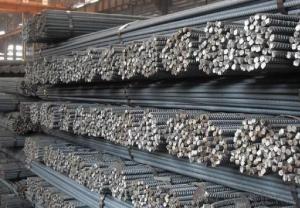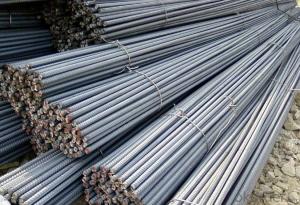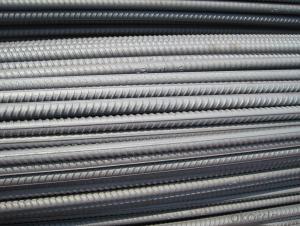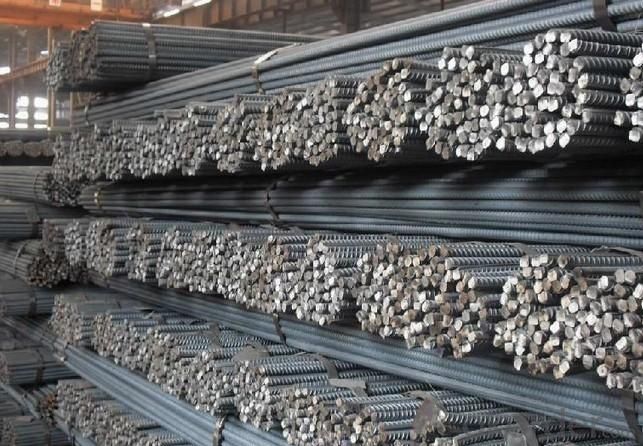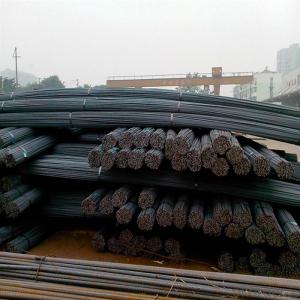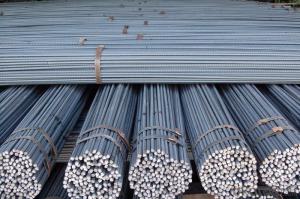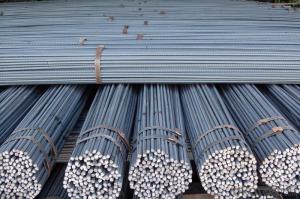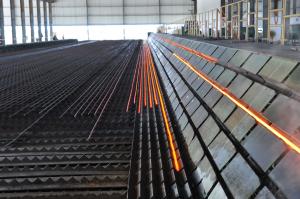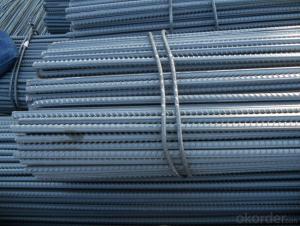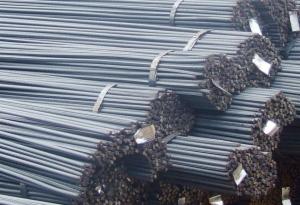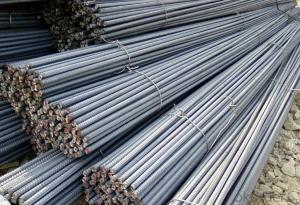GB Standard HRB400 Steel Deformed Bar 22mm/25mm
- Loading Port:
- Tianjin
- Payment Terms:
- TT or LC
- Min Order Qty:
- 50 m.t
- Supply Capability:
- 20000 m.t/month
OKorder Service Pledge
OKorder Financial Service
You Might Also Like
GB Standard HRB400 Steel Deformed Bar 22mm/25mm
Description:
-Standard: GB
-Material: HRB400
-Specification:
| Diameter(mm) | Section Area(mm2) | Mass(Kg/m) | Length(m) |
| 22 | 380.1 | 2.98 | 9, 12 or as customs' request |
| 25 | 490.9 | 3.85 | 9, 12 or as customs' request |
Chemical Composition(%) of GB Standard HRB400 Steel Deformed Bar 22mm/25mm:
| C | Mn | Si | S | P | V |
| ≤0.25 | ≤1.60 | ≤0.08 | ≤0.045 | ≤0.045 | 0.04-0.12 |
Mechanical Properties of GB Standard HRB400 Steel Deformed Bar 22mm/25mm:
Yield Strength (N/cm²) | Tensile Strength (N/cm²) | Elongation (%) |
≥400 | ≥570 | ≥14 |
Usage and Applications of GB Standard HRB400 Steel Deformed Bar 22mm/25mm:
Deformed bar is widely used in buildings, bridges, roads and other engineering construction. Big to highways, railways, bridges, culverts, tunnels, public facilities such as flood control, dam, small to housing construction, beam, column, wall and the foundation of the plate, deformed bar is an integral structure material. With the development of world economy and the vigorous development of infrastructure construction, real estate, the demand for deformed bar will be larger and larger.
Packaging & Delivery of GB Standard HRB400 Steel Deformed Bar 22mm/25mm:
Packaging Detail: products are packed in bundle and then shipped by container or bulk vessel, deformed bar is usually naked strapping delivery, when storing, please pay attention to moisture proof. The performance of rust will produce adverse effect.
Each bundle weight: 2-3MT, or as required
Payment term: TT or L/C
Delivery Detail: within 45 days after received advanced payment or LC.
Label: to be specified by customer, generally, each bundle has 1-2 labels
Trade terms: FOB, CFR, CIF
Images of GB Standard HRB400 Steel Deformed Bar 22mm/25mm:

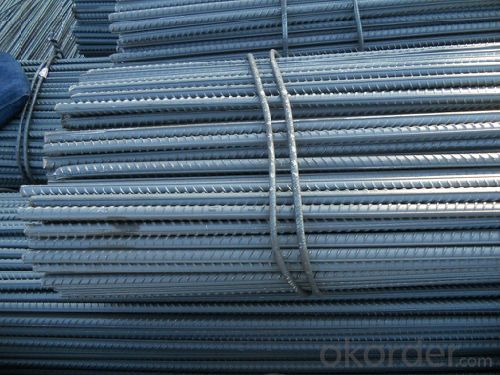
*If you would like to get our price, please inform us the size, standard/material and quantity. Thank you very much for your attention.
- Q: What are the guidelines for the proper spacing of steel rebars in slabs-on-grade?
- To ensure the structural integrity and longevity of the concrete slab, it is crucial to follow guidelines for spacing steel rebars in slabs-on-grade. Here are the general guidelines to be followed: 1. Concrete cover: The first consideration is the distance between the rebar surface and the concrete edge, known as the concrete cover. Local building codes or engineering standards typically specify the minimum cover requirements, which must be strictly adhered to. This cover protects the rebar from corrosion and provides fire resistance. 2. Rebar spacing: The spacing between rebars depends on the load requirements and slab dimensions. A closer spacing results in a stronger slab. However, it is necessary to maintain proper spacing to allow free flow of concrete around the rebar during pouring and ensure proper consolidation. Generally, the spacing should not exceed three times the slab thickness or 18 inches, whichever is smaller. 3. Rebar size and diameter: The selection of rebar size and diameter depends on the load requirements and design specifications. Larger loads require larger diameter rebars with increased spacing. Common rebar sizes for slabs-on-grade range from #3 (3/8 inch diameter) to #8 (1 inch diameter). 4. Rebar placement: Proper placement of rebars within the slab is critical. The rebars should be positioned at the center of the slab's thickness to ensure even load distribution. Moreover, they should be securely tied or supported to prevent displacement during concrete placement and consolidation. 5. Joint reinforcement: Construction joints are often included in slabs-on-grade to accommodate expansion and contraction. Proper reinforcement of these joints is essential for maintaining structural integrity. Joint reinforcement, such as dowel bars or tie bars, should be placed perpendicular to the joint and adequately anchored on both sides. It is important to note that these guidelines provide a general overview, and specific project requirements may vary. Consulting a structural engineer or following local building codes and industry standards is essential to ensure compliance and optimize the design of steel rebars in slabs-on-grade.
- Q: Are there any standards or codes for steel rebars?
- Certainly, steel rebars are subject to standards and codes that are essential for guaranteeing their quality, safety, and compatibility across various construction projects. One of the most widely recognized standards for steel rebars is the ASTM A615/A615M, which is responsible for specifying the requirements of deformed and plain carbon-steel bars used in concrete reinforcement. This standard covers a range of physical and mechanical properties, including chemical composition, yield strength, tensile strength, elongation, and bendability. It also provides guidelines for marking, packaging, and testing of rebars. In addition to the ASTM A615/A615M, there are other relevant standards and codes utilized in different countries and regions. For instance, in Europe, the European Standard EN 10080 outlines the specifications for steel rebars, including dimensions, tolerances, and mechanical properties. Similarly, the British Standard BS 4449 is widely employed in the United Kingdom for steel reinforcement in concrete. These standards and codes play a pivotal role not only in ensuring consistency during the manufacturing and production of steel rebars but also in aiding architects, engineers, and construction professionals in selecting the most suitable rebars for their projects. Compliance with these standards is of utmost importance to ensure the structural integrity, durability, and safety of reinforced concrete structures. It is imperative for stakeholders in the construction industry to acquaint themselves with the pertinent standards and codes for steel rebars and consistently adhere to them. This practice helps to uphold high-quality construction protocols and mitigate the risk of failures or accidents caused by substandard materials.
- Q: How are steel rebars stored and handled on construction sites?
- Steel rebars, also known as reinforcing bars, are an essential component in construction projects that require reinforced concrete structures. These rebars are typically stored and handled on construction sites in a systematic and organized manner to ensure their safety and efficient use. To begin with, steel rebars are often delivered to construction sites in bundles or bundles tied using wire or binding materials. Once the rebars are unloaded from the delivery truck, they are usually stored in designated areas known as rebar yards or cages. These areas are specifically designed to accommodate the length, size, and weight of the rebars, ensuring they are kept off the ground and protected from moisture, dirt, and any potential damage. In the rebar yard, rebars are commonly stacked horizontally and grouped according to their size, length, and grade. This arrangement facilitates easy identification and accessibility when needed for construction. Additionally, rebars are often separated by spacers or wooden blocks to prevent direct contact between them, reducing the risk of corrosion or tangling. When it comes to handling steel rebars, construction workers must prioritize safety and follow specific guidelines. Personal protective equipment, such as gloves and safety boots, should be worn to prevent injuries and ensure a secure grip on the rebars. In some cases, workers may use lifting equipment, such as cranes or forklifts, to move and transport rebars to different areas of the construction site. During transportation, rebars should be secured properly to prevent any shifting or falling, which could lead to accidents. Workers should also avoid dragging rebars on the ground, as this can cause damage to the bars or deform their shape, compromising their structural integrity. It is crucial to note that steel rebars should be inspected before use to ensure they meet the required specifications and are free from any defects. Rusty or damaged rebars should be discarded or repaired, depending on the severity of the issue. In summary, steel rebars are stored and handled on construction sites with utmost care and attention. Proper storage in designated rebar yards, correct grouping and separation, and adherence to safety guidelines during handling contribute to the successful and efficient use of steel rebars in construction projects.
- Q: What are the safety considerations when handling steel rebars?
- When handling steel rebars, it is important to observe several safety considerations. Firstly, workers should always wear appropriate personal protective equipment (PPE) such as gloves, safety glasses, and sturdy footwear to protect against potential injuries. Secondly, it is crucial to ensure proper lifting techniques and use mechanical aids when necessary to avoid strain on the body. Additionally, workers should be cautious of the sharp edges and protruding ends of the rebars to prevent cuts and puncture wounds. Regular inspection of the rebars for defects, such as rust or bending, is also essential for maintaining a safe work environment. Lastly, proper storage and stacking procedures should be followed to prevent rebars from falling, causing injuries to workers or damage to property.
- Q: What are the guidelines for proper bending of steel rebars on construction sites?
- To guarantee the structural integrity and safety of buildings, it is crucial to adhere to guidelines for bending steel rebars on construction sites. The following are key guidelines that should be followed: 1. Utilize appropriate tools: Make use of a specialized rebar bending machine or manual rebar bender designed specifically for steel rebars. These tools enable precise bending without causing any damage or weak points on the rebar. 2. Accurately determine the required bend angle: Before bending, accurately measure and mark the desired bend angle on the rebar. Use either a protractor or a bending template to achieve the angle you desire. 3. Adhere to the bending radius: The bending radius refers to the minimum radius at which the rebar can be bent without sustaining any damage. Always follow the recommended bending radius provided by the manufacturer or structural engineer to prevent fractures or deformations. 4. Secure the rebar firmly: Before bending, ensure that the rebar is securely fastened in the bender to prevent any slipping or movement during the bending process. This guarantees precise bending and reduces the risk of accidents. 5. Employ a gradual bending process: When bending the rebar, apply gradual pressure and avoid sudden or excessive force. This gradual bending approach minimizes the risk of cracks or fractures and preserves the rebar's structural integrity. 6. Conduct a thorough inspection of the bend: After bending, carefully examine the rebar to ensure that it matches the desired angle and displays no visible defects or stress marks. Any faulty bends should be rectified immediately. 7. Proper storage practices: Store the bent rebar in a designated area, preferably on a flat surface, to prevent any distortion or damage. Avoid placing heavy objects on top of the bent rebar to maintain its shape and strength. 8. Observe safety precautions: Always wear appropriate personal protective equipment (PPE), such as gloves and safety glasses, while performing bending operations. Ensure that the work area is free of obstacles and other workers to prevent accidents. 9. Maintain proper documentation: Document the bending process, including the angle, radius, and any deviations or issues that arise. This information can be valuable for quality control purposes and future reference. 10. Comply with building codes: Ensure that the bending process aligns with local building codes and regulations. Seek guidance from a structural engineer or relevant authorities if necessary. By adhering to these guidelines, construction professionals can ensure the proper bending of steel rebars, resulting in a building that is structurally sound and safe.
- Q: Are steel rebars suitable for use in aggressive environments?
- Steel rebars are indeed suitable for use in aggressive environments. Steel rebars are commonly used in construction projects, particularly in reinforced concrete structures, due to their high tensile strength and durability. However, in aggressive environments where the rebar is exposed to corrosive elements such as moisture, chloride ions, and chemicals, corrosion can occur, weakening the rebars and compromising the structural integrity of the concrete. To combat this issue, steel rebars are often coated with protective materials like epoxy or zinc to provide a barrier against corrosion. Additionally, stainless steel rebars are also used in aggressive environments due to their superior corrosion resistance properties. In conclusion, while steel rebars are generally suitable for use in aggressive environments, it is crucial to consider the specific conditions and ensure appropriate protective measures are taken to prevent corrosion and maintain the longevity of the reinforced concrete structure.
- Q: What is the effect of exposure to chemicals on the durability of steel rebars?
- Exposure to certain chemicals can have varying effects on the durability of steel rebars. Some chemicals, such as chloride ions found in saltwater or de-icing salts, can lead to corrosion and reduce the lifespan of rebars. On the other hand, certain coatings or treatments can enhance the resistance of rebars to chemical exposure and increase their durability. It is crucial to consider the type and concentration of chemicals present in the environment when determining the potential impact on steel rebars' durability.
- Q: How do steel rebars provide strength to concrete structures?
- Steel rebars provide strength to concrete structures by acting as reinforcement. When embedded within the concrete, rebars enhance its tensile strength, which is otherwise low. As concrete is strong in compression but weak in tension, the rebars resist the tensile forces that can cause cracking or failure in the structure. By distributing and absorbing these tensile forces, steel rebars increase the overall strength, durability, and structural integrity of the concrete.
- Q: How do steel rebars help in preventing cracks in concrete structures?
- Steel rebars help in preventing cracks in concrete structures by providing reinforcement and increasing the tensile strength of the concrete. Concrete is strong in compression but weak in tension. When exposed to forces that cause tension, such as bending or stretching, concrete tends to crack. Steel rebars, which are embedded within the concrete, act as a support system and resist the tensile forces, preventing or minimizing cracks. The rebars distribute the stress across the structure, enhancing its overall durability and preventing failure.
- Q: Can steel rebars be used in foundation systems?
- Yes, steel rebars can be used in foundation systems. Steel rebars are commonly used as reinforcement in concrete foundations to provide additional strength and stability. They help to distribute the load evenly and prevent cracking or failure of the foundation.
Send your message to us
GB Standard HRB400 Steel Deformed Bar 22mm/25mm
- Loading Port:
- Tianjin
- Payment Terms:
- TT or LC
- Min Order Qty:
- 50 m.t
- Supply Capability:
- 20000 m.t/month
OKorder Service Pledge
OKorder Financial Service
Similar products
Hot products
Hot Searches
Related keywords
